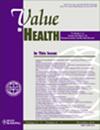澳大利亚老年人慢性疼痛与痴呆症之间关系的年龄和性别差异。
IF 6
2区 医学
Q1 ECONOMICS
引用次数: 0
摘要
目的:慢性疼痛是一种对老年人影响极大的衰弱性疾病,有可能增加老年人出现认知障碍的几率。本研究的主要目的是探讨慢性疼痛与痴呆症之间的相关性。此外,本研究还试图确定慢性疼痛与痴呆症之间的关联是否因年龄和性别而异:横断面数据来自于残疾、老龄化和照顾者调查(SDAC)。本研究分别纳入了2015年和2018年65岁及以上的20671名和20081名参与者。采用多变量逻辑回归模型评估了慢性疼痛与痴呆症之间的集合关联。此外,研究还考察了慢性疼痛与年龄、慢性疼痛与性别与痴呆之间的乘法交互效应:汇总分析表明,与无慢性疼痛的澳大利亚老年人相比,慢性疼痛与痴呆症的发生几率增加有关(调整后患病率比 [AOR]=1.95, 95%CI: 1.85-2.05)。交互效应表明,所有年龄组的慢性疼痛患者患痴呆症的几率都有所增加。此外,与无慢性疼痛的女性和男性相比,患有慢性疼痛的女性患痴呆症的几率更高:有必要采取持续、协调和量身定制的医疗保健策略,以确定疼痛管理目标并探索老年人慢性疼痛的早期治疗方案,尤其是在需求最大的群体中。本文章由计算机程序翻译,如有差异,请以英文原文为准。
Age and Gender Differences in the Relationship Between Chronic Pain and Dementia Among Older Australians
Objectives
Chronic pain is a highly debilitating condition that affects older adults and has the potential to increase their odds of experiencing cognitive impairment. The primary objective of this study was to examine the correlation between chronic pain and dementia. Additionally, this research endeavors to ascertain whether the association between chronic pain and dementia differs by age and gender.
Methods
Cross-sectional data were derived from the Survey of Disability, Ageing, and Carers. A total of 20 671 and 20 081 participants aged 65 years and older in 2015 and 2018, respectively, were included in this study. The pooled association between chronic pain and dementia was assessed using a multivariable logistic regression model. Furthermore, the study also examined the multiplicative interaction effects between chronic pain and age, as well as chronic pain and gender, with dementia.
Results
The pooled analysis demonstrated that chronic pain was associated with a heightened odds of dementia (adjusted odds ratio 1.95; 95% CI 1.85-2.05) among older Australians compared with their counterparts without chronic pain. The interaction effect indicated that individuals with chronic pain across all age groups exhibited increased odds of living with dementia. Additionally, women with chronic pain had higher odds of dementia compared with their counterparts without chronic pain and being male.
Conclusions
A continuous, coordinated, and tailored healthcare strategy is necessary to determine the pain management goals and explore early treatment options for chronic pain in older adults, particularly in groups with the greatest need.
求助全文
通过发布文献求助,成功后即可免费获取论文全文。
去求助
来源期刊

Value in Health
医学-卫生保健
CiteScore
6.90
自引率
6.70%
发文量
3064
审稿时长
3-8 weeks
期刊介绍:
Value in Health contains original research articles for pharmacoeconomics, health economics, and outcomes research (clinical, economic, and patient-reported outcomes/preference-based research), as well as conceptual and health policy articles that provide valuable information for health care decision-makers as well as the research community. As the official journal of ISPOR, Value in Health provides a forum for researchers, as well as health care decision-makers to translate outcomes research into health care decisions.
 求助内容:
求助内容: 应助结果提醒方式:
应助结果提醒方式:


